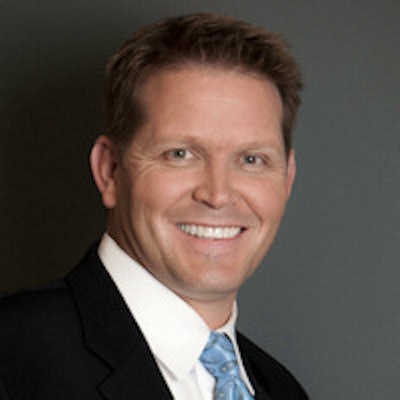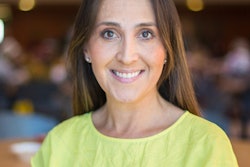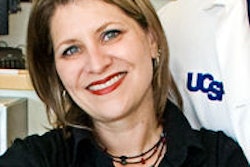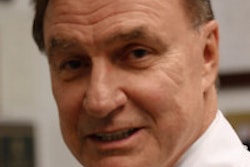
DrBicuspid.com is pleased to present the next installment of Leaders in Dentistry, a series of interviews with researchers, practitioners, and opinion leaders who are instrumental in changing the practice of dentistry.
Stuart Frost, DDS, received his dental degree at the University of the Pacific School of Dentistry and practiced general dentistry for five years. Following a one-year fellowship in temporomandibular joint dysfunction, he completed a two-year residency in orthodontics and dentofacial orthopedics at the University of Rochester. Dr. Frost is currently a part-time associate clinical professor at the University of the Pacific orthodontic program. He has a thriving practice in Arizona and lectures all over the world.
DrBicuspid.com spoke with Dr. Frost before a recent presentation. He outlined not only the advancements in orthodontic treatments, but what he tries to bring to his presentations and how audiences differ all over the world.
DrBicuspid.com: Dr. Frost, you focus on orthodontics. How has treatment evolved over the time you have been practicing?
Dr. Frost: When I was in residency, I was taught to treatment plan around the lower incisor, and then match everything to that. Now progressive orthodontists treatment plan around the upper incisor, in all three planes of space: front to back, side to side, and up and down. The upper incisor is our primary focus when treatment planning our cases, which benefits the face and the overall aesthetics of the case.
What led to that?
 Stuart Frost, DDS.
Stuart Frost, DDS.Many of our cases turned out with undesirable facial features [when treatment planning was focused on the lower incisor]. I found that if we extracted four bicuspids to make room for the teeth to line up and become straight, we were risking long-term profile changes.
Many of our patients in their 30s and 40s were coming to us with less than ideal facial proportions. In other words, instead of having a nice convex profile where the upper lip is ahead of the lower lip, patients were coming in with concave profiles, or inadequate lip support.
Many of my patients were not satisfied with how their lips and midface were aging. The evolution came about through a combination of people paying more attention to the way their face was aging and seeing what their profile looked like well into their 40s and 50s. This led orthodontists to want to treatment plan with the face and the lips in mind for a better aging process.
Is this what you mean by "face-driven" treatment planning?
Yes, but face-driven treatment planning goes beyond just lining up teeth. What we want to do when looking at treatment is to look at any way of enhancing the face through orthodontics. Can we improve a patient's profile? Is there anything we can do to broaden the upper arch and enhance the midface, particularly the upper lip?
We want to maintain or improve the whole profile of the upper lip and the lip projection, and see if there is anything we can do to enhance the balance of the face, as well as the upper and lower jaw.
How have technology and tools evolved?
We now have passive self-ligating brackets like the Damon system (Ormco) and superelastic wires that allow us to have less complicated treatment plans. Older appliances and treatment protocols required additional appliances and greater force to treat the patient. Today treatment is less complicated with less pain, fewer extractions, and fewer appliances such as headgear or rapid palate expanders.
Do those evolutions make a practitioner's life easier?
“These orthodontists and dentists who might have been on their way to retirement suddenly see a shift to a less complicated treatment with better results.”
It really does. With new bracket technology, we see our patients every 10 weeks instead of every four weeks, which makes a huge difference in the practice. It opens up more room in scheduling, and patients don't have to be seen as often, which allows less office days, meaning lower overhead.
You speak all over the world. Have you noticed any change in who attends your conferences over the last several years?
What we have seen over the last four or five years is that we're attracting an older clientele. These orthodontists and dentists who might have been on their way to retirement suddenly see a shift to a less complicated treatment with better results. This gets them excited again, as they are able to do something they've never done before with their treatment, and it rejuvenates them and inspires them to practice longer.
How does your presentation change depending on the audience?
I've been around the world to teach. For instance, I just got back from Amman, Jordan. The audience was hungry for anything and everything you can give them on straightening teeth -- they were like sponges. I was also recently in Dallas in front of another group who wanted more focused information on finishing and making smiles more aesthetically pleasing.
Every group is different. I try to get as much information as possible about the group I am interacting with beforehand. I'll discuss with Ormco and the dealer about the demographics of the group I'll be talking with, and find out if they are relatively new users of the system or if they are a veteran crowd that wants specific information on a more detailed part of the treatment process.
When I went to Amman, I was told it was a mix of new and seasoned users, but when I got there, I found out they were basically new users, and I had to change my presentation on the fly. Sometimes you don't know what you are getting yourself into, and you have to be prepared to change.
What I try to do in my lectures is to help inspire them to be better than before they came. If I can help someone become inspired to be a better clinician and a better person, then I feel like I have succeeded.



















